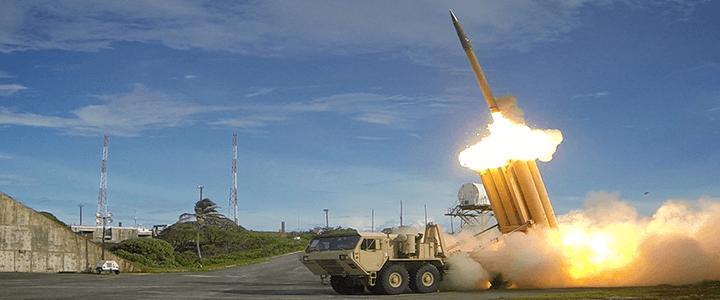The news, as often happens in Washington these days, was overshadowed by the procedural move in the Senate, but on Wednesday, the State Department announced that the Kingdom of Saudi Arabia signed a long-awaited deal to buy the Terminal High Altitude Area Defense system on Monday of this week. The State Department had approved the $15 billion deal, which is a key component of the president’s promised $110 billion in arms sales to the kingdom, in October 2017.
Congress approved the deal in 2017, meaning it ought to be protected from the ongoing anti-Saudi fever gripping Capitol Hill over the murder of Jamal Khashoggi.
A lot of hardware to saudi
The sale will include enough gear to outfit seven air defense batteries with the Lockheed Martin- and Raytheon-built system: 44 launch vehicles (which hold 6 missiles each), 360 THAAD interceptor missiles (enough to fully arm each launcher, with 96 spare missiles in reserve), seven powerful AN/TPY-2 radars, 16 fire control systems, and 43 trucks plus generators, spare parts, and other support items. Along with the hardware, the contract will require as many as 18 U.S. Government employees and 111 contract employees to be in Saudi Arabia “for an extended period of time.”
The agreement is a big deal for Lockheed Martin and Raytheon, but it is a bigger deal for Saudi Arabia, which has faced a constant threat from Iranian-built missiles fired from the Houthi-controlled areas of Yemen. According to the Missile Defense Project at the Center for Strategic and International Studies, Saudi Arabia has intercepted 106 of those missiles through July 2018, primarily with the Patriot PAC-2 system. There have been 43 strikes, although CSIS stressed that a strike is not necessarily evidence of a failed intercept, as many of the strikes were in areas outside Saudi Arabia’s missile defense perimeter.
The Houthis announced a halt to those attacks two weeks ago, but apparently broke that ceasefire Thursday morning with a ballistic missile strike on a Saudi military camp near the Yemeni border.
While no one wants to see the conflict in Yemen last a day longer than absolutely necessary to restore the rightful government, I have to admit that part of me wants to see the THAAD system deployed to Saudi Arabia quickly so we can see it in operation against a real threat. The system is perfect in testing, but there’s nothing like the real thing to see how it works.
A good deal for everyone
The deal appeared to be in potential jeopardy at several points during the negotiations, as the Saudis said they were considering buying Russia’s S-400 “Triumf” system, called the SA-21 Growler by NATO. This would have been a blow to American relations with Saudi Arabia. While there are plenty of people who would love to see that relationship deteriorate, those people haven’t thought through the second and third order effects of such a split.
As the Missile Defense Project’s Thomas Karako told CNBC, “It’s a big step forward to strengthening missile defense capabilities in the Gulf, in a couple of ways. Besides probably being the largest missile defense sale to date, it also represents an important political commitment by both the U.S. and the Kingdom of Saudi Arabia to counter Iranian ballistic missiles by every means possible.”
Simply put, the Saudis are fighting the Iranians so we don’t have to. Ending U.S. support for the war in Yemen will not automatically end that war. It will, however, make it easier for Iran to prevail. Companies like Lockheed Martin and Raytheon are easy targets for critics of the military industrial complex, but the president was absolutely right when he told “60 Minutes” that he didn’t want to jeopardize the jobs that go along with fulfilling a $15 billion order. Between them, the two companies employ about 164,000 people. Last year, their combined sales were $76.4 billion. So $15 billion, even if not recognized in a single transaction, cannot be dismissed lightly.
This sale will save lives.




